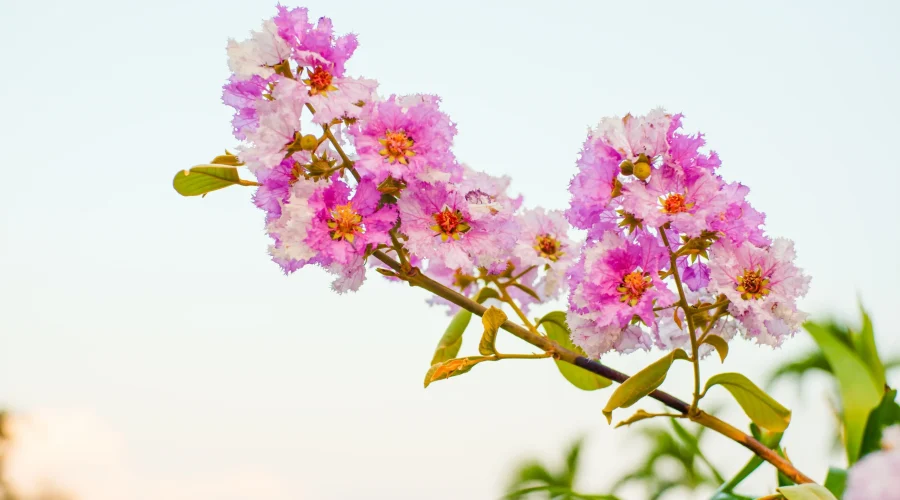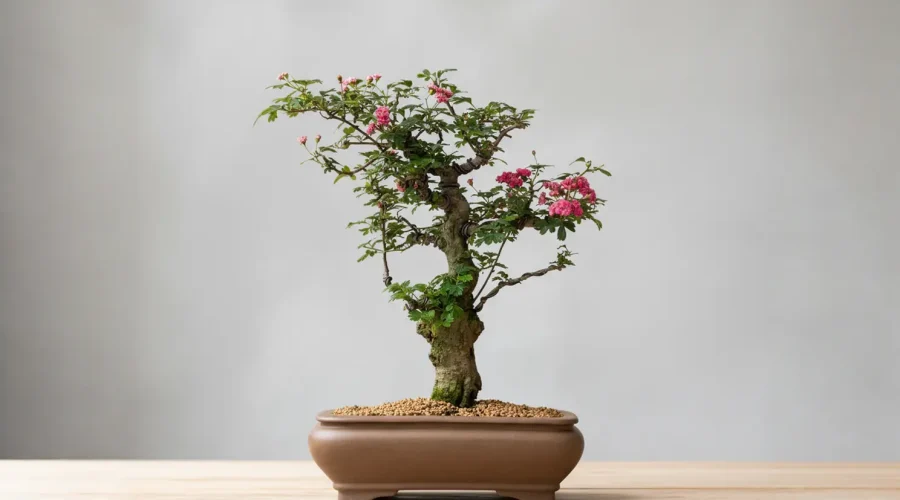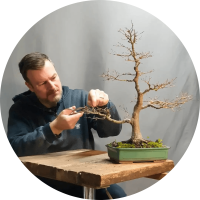How To Care for an Lagerstroemia Indica

The Lagerstroemia indica, commonly known as Crepe Myrtle, is a deciduous bonsai admired for its stunning summer blooms and elegant bark that peels to reveal smooth, colorful tones beneath. This species offers a perfect combination of beauty and resilience, rewarding consistent care with vibrant flowers and refined structure.
Lagerstroemia Indica at a glance
Native to Southeast Asia, Crepe Myrtle thrives in warm, sunny climates and adapts well to bonsai cultivation thanks to its fast growth and flexible branching. Its fine twigs and delicate flowers make it an ideal choice for artists who enjoy a balance between strength and grace.
How often should I water my Lagerstroemia Indica bonsai?
Crepe Myrtle enjoys consistently moist, but never soggy, soil. During spring and summer, when growth and flowering are active, water thoroughly once the top layer feels slightly dry. In very hot weather, daily watering may be necessary.
As autumn approaches and the tree begins to slow its growth, gradually reduce watering frequency. In winter, when the bonsai becomes dormant and loses its leaves, keep the substrate only slightly moist to prevent root dehydration. Always ensure good drainage — Lagerstroemia indica dislikes stagnant water but appreciates humidity around its roots.
How much light does my Lagerstroemia Indica need?
Your Lagerstroemia indica bonsai thrives in full sun, which encourages abundant flowering and compact, balanced growth. The more sunlight it receives, the more vibrant its blooms and the smaller its leaves will be.
During spring and summer, provide at least 6 hours of direct sunlight daily. In hot Mediterranean or continental climates, it’s best to protect it from the intense midday sun to avoid leaf scorch, especially during heatwaves.
As autumn arrives and the tree begins to prepare for dormancy, full sun exposure continues to help harden new shoots and enhance its bark color.
In winter, after the leaves have fallen, the bonsai can remain outdoors in a bright, sheltered spot as long as temperatures stay above –5 °C (23 °F). Below that, move it into a cold frame or unheated greenhouse for protection.

What's the best temperature for my Lagerstroemia Indica?
Its ideal temperature range lies between 18 °C and 30 °C (64 °F – 86 °F) during the growing season. Within this range, it produces vigorous shoots, glossy foliage, and its signature clusters of colourful summer flowers.
In spring and summer, consistent warmth and sunlight stimulate healthy growth and abundant blooming. When temperatures rise above 32 °C (90 °F), provide extra humidity and light afternoon shade to prevent leaf scorch. Adequate watering and airflow will help the bonsai stay hydrated and cool through the hottest months.
As autumn approaches, cooler nights and shorter days trigger the tree’s transition toward dormancy, often accompanied by a beautiful display of golden or orange foliage. In winter, Lagerstroemia indica requires a period of rest and can tolerate mild frost down to around –5 °C (23 °F). If lower temperatures are expected, protect the bonsai by moving it to a cold frame, unheated greenhouse, or sheltered balcony, ensuring it still receives bright light and natural airflow.
Fertilising your Lagerstroemia Indica
Regular feeding is essential to sustain flower production and strong growth.
Begin fertilising in early spring, right after the buds start to swell, and continue every two weeks until late summer.
Use a balanced fertiliser (for example, NPK 10-10-10) during active growth. Once the blooming season ends, switch to a low-nitrogen formula to help the tree prepare for dormancy and encourage lignification of branches.
Avoid fertilising during full bloom, too much nitrogen may reduce flowering intensity.
Do I need to prune my Lagerstroemia Indica?
Pruning is key to keeping your Crepe Myrtle bonsai elegant and proportioned. During spring and summer, trim new shoots after they’ve developed 4 to 6 leaves, cutting back to 2 leaves to maintain shape and promote ramification.
Major structural pruning should be performed in late winter, before new growth begins. This species back-buds well, making it forgiving for heavier cuts. Lagerstroemia indica responds well to wiring, especially on young branches. Be sure to check wires regularly, the bark is thin and can scar if left on too long.
When to repot an Lagerstroemia Indica?
Repotting should be done every 2 to 3 years for young trees, and every 4 to 5 years for older specimens.
The ideal time is late winter or very early spring, right before buds open.
Use a well-draining soil mix, such as 50 % akadama, 25 % pumice, and 25 % lava rock. This ensures both aeration and moisture retention.
When repotting, prune the roots lightly and remove any thick or circling roots to encourage a fine, fibrous system. After repotting, keep the bonsai in partial shade for two weeks and maintain even moisture.
Common Problems
Yellowing or dropping leaves during the growing season usually indicate underwatering or excessive heat stress. Sparse flowering often results from insufficient sunlight or excess nitrogen.
Check regularly for aphids and powdery mildew, especially during humid summer months. Gentle rinsing or an organic neem-oil treatment typically resolves these problems quickly.
With steady care and seasonal observation, Lagerstroemia indica will reward you with years of captivating summer color and graceful winter silhouettes.

Written by Luca Valagussa
Founder and bonsai master of Treevaset
Formerly in finance, Luca turned his lifelong passion for bonsai into his profession to make bonsai art simple, inspiring, and accessible to everyone.
